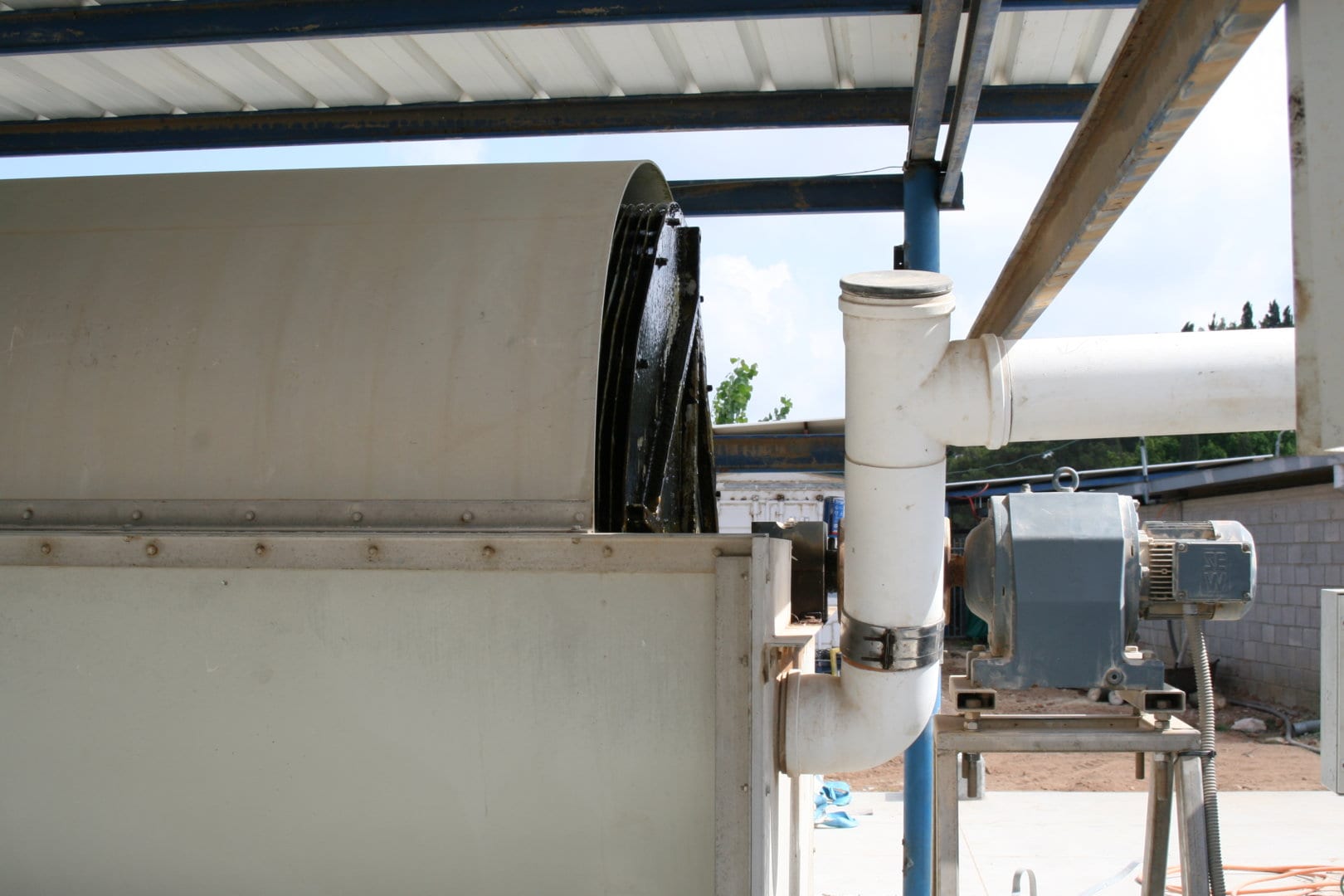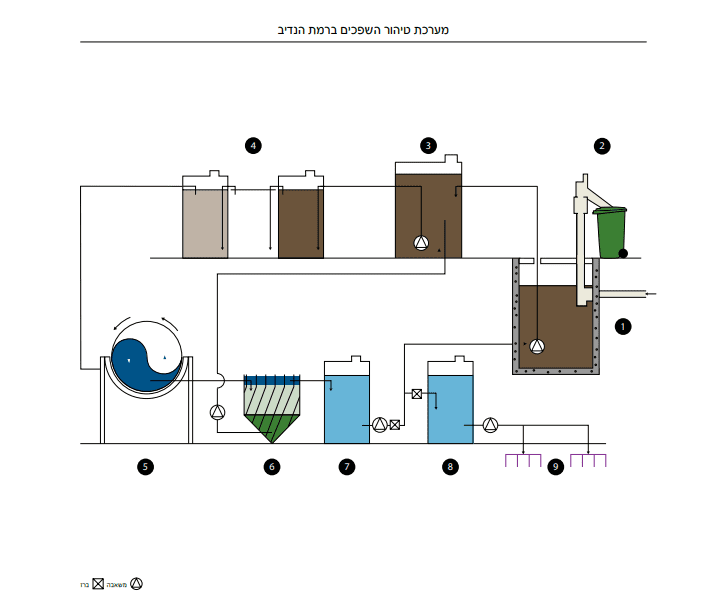
Wastewater purification at Ramat Hanadiv is carried out in an independent purification system without external connections. The process includes directing the wastewater from the toilets and basins to a collection tank, from there to the wastewater purification system (WPS) and from the WPS the purified water is returned for irrigation. About 10–17 m3 water pass through the WPS each day. The WPS is of the Rotating Biological Contactor (RBC) type in which the wastewater purification takes place through the following stages (See below illustrated description as well):
1.Septic tank – wastewater is collected to an underground septic tank located next to an innovative mechanical reactor.
2.Mechanical reactor – the mechanical reactor filters out wet wipes and female sanitation products, squeezes them, and using a mechanical arm throws them into a garbage bin installed outside of the septic tank.
3.Balance tank – the wastewater flows from the septic tank to the balance tank, from which it is pumped and transferred in measured amounts, and at a fixed frequency, to the settling tanks.
4.Settling tanks – in the three settling tanks, solids and fats are separated from the liquids. The liquid sewage flows onwards to the purification tank.

5.“Bio-Disk” purification tank – this tank contains disks with a high surface area that enables development of large bacterial colonies. Each disk rotates constantly, with one half inside the wastewater and one half outside of it, exposed to the air. The movement of the disks and their exposure to the air causes assimilation of oxygen and a process of aerobic metabolism carried out by bacteria in a way that ensures rapid, high-quality purification of the wastewater. From the Bio-Disk tank the water flows to a clearing tank.
6.Clearing tank – in this tank the water is cleared through a system of lamella separators that filter the excess sewage sludge from the purified water. The excess sewage sludge sinks to the bottom of the tank and is transferred by an automatic pump to a special tank for sewage sludge collection. The purified water flows to the pooling tank.
7.Pooling tanks – the purified wastewater is stored in this tank.
8.Pooling tank for irrigation – the high-quality purified water is stored in the pooling tanks, before flowing out for irrigation.
9.Drip irrigation – the purified water flows through purple pipes (designed for purified water) to irrigate the research plot where we grow white willow for research purposes. The research examines whether white willow can be used as a forage plant for goats and sheep, and which health benefits it provides for them.
Any question? We will be glad to help
Of further interest...
Accessibility
Memorial Gardens Main Entrance
The main entrance to the Memorial Gardens – located next to the Visitors Pavilion. In the entrance plaza are temporary exhibitions on a range of subjects promoted by Ramat Hanadiv
Sustainability
Sustainable Gardening
Sustainable gardening is defined as gardening that considers the needs of the current generation without harming the needs of future generations. It includes garden design that considers the existing elements on site – the landscape, soil, environment and vegetation suitable for the region
Dining Here
Dining-The Picnic Site
The picnic area is located near the secondary parking lot. You are welcome to spend time there before or after your tour of the Gardens.

